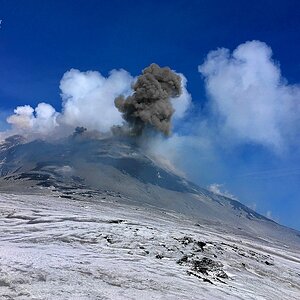deepfriedl
TPF Noob!
- Joined
- Apr 25, 2016
- Messages
- 25
- Reaction score
- 4
- Location
- Pittsburgh, PA, USA
- Website
- davidfriedl.com
- Can others edit my Photos
- Photos NOT OK to edit
I recently bought a few Nikon Series E Lenses to use on my D3300. Specifically, I bought the 50mm f/1.8, the 28mm f/2.8, and the 70-210mm telephoto lens ( I think it's an f/4). I probably spent $100 all together, and I'm enjoying finding out what they good for.
One interesting thing I've found is that the focus doesn't seem to have the "range" that my kit lenses have. I can focus with much better clarity at a longer distance for a large image with my kit lenses than with the Series E lenses. The Series E lenses sort of max out at ∞ where I would still be able to adjust sharper focus with my kit lenses. Am I right to assume that this is because the Series E lenses were designed for a 35mm film camera and that Nikon expected that the largest those film shots would be blown up is 8x10?
Before anyone asks why I would use the Series E 70-210 f/4 when I have a Nikkor AF-S DX 55-200mm f/4-5.6G ED VR II, my girlfriend and I both use D3300's, but I bought the kit that also includes the Nikkor, and I like to lend it to her and use the Series E lens when we shoot wildlife.
One interesting thing I've found is that the focus doesn't seem to have the "range" that my kit lenses have. I can focus with much better clarity at a longer distance for a large image with my kit lenses than with the Series E lenses. The Series E lenses sort of max out at ∞ where I would still be able to adjust sharper focus with my kit lenses. Am I right to assume that this is because the Series E lenses were designed for a 35mm film camera and that Nikon expected that the largest those film shots would be blown up is 8x10?
Before anyone asks why I would use the Series E 70-210 f/4 when I have a Nikkor AF-S DX 55-200mm f/4-5.6G ED VR II, my girlfriend and I both use D3300's, but I bought the kit that also includes the Nikkor, and I like to lend it to her and use the Series E lens when we shoot wildlife.








![[No title]](/data/xfmg/thumbnail/41/41900-d02b27da6248f10da25edf2413570222.jpg?1619739936)


![[No title]](/data/xfmg/thumbnail/41/41897-ea48d59eea1540d700b6e9051bce38da.jpg?1619739935)

